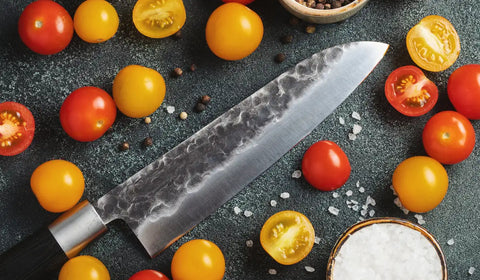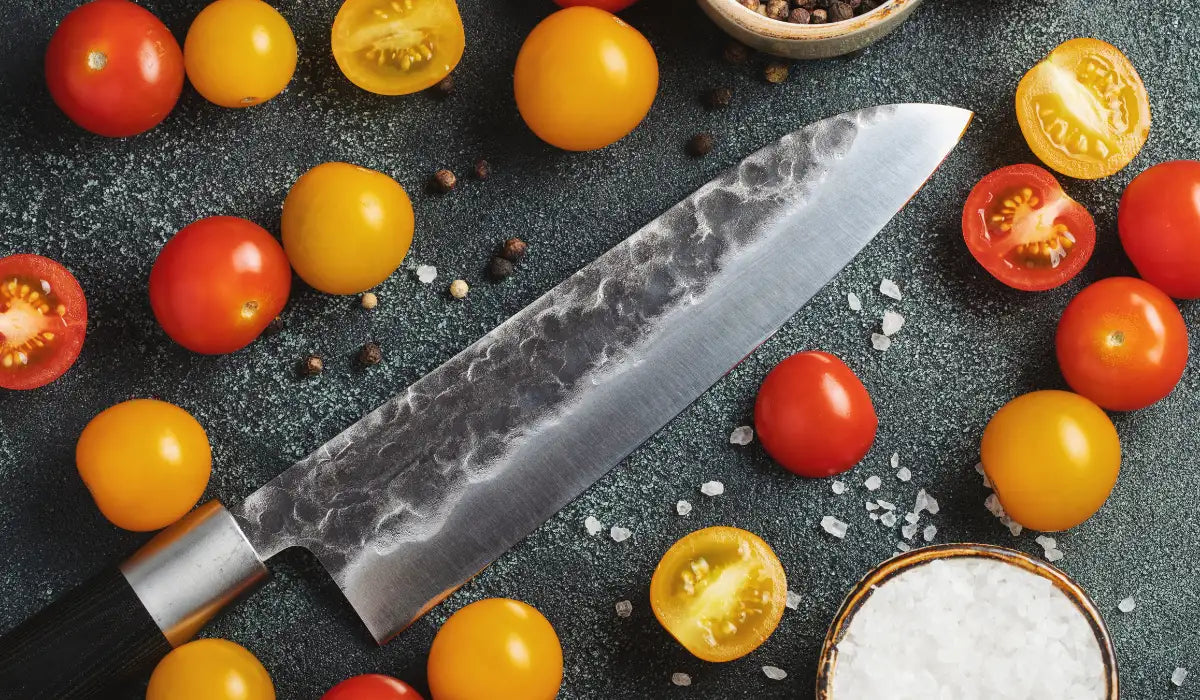How to Use a Chef Knife: Must-Have Skills for Every Home Cook
Mastering how to use a chef's knife is essential for every home cook. A chef knife is not just a versatile kitchen tool; it's the backbone of efficient cooking. Knowing the proper techniques can enhance your culinary skills and even make cooking more enjoyable. In this guide, we’ll explore must-have knife skills that every cook should learn, along with tips for maintaining safety and efficiency in the kitchen.
Understanding Your Chef Knife
What is a Chef's Knife?
A chef knife is typically 8 to 12 inches long and features a broad blade that tapers to a point. This design allows for a rocking motion, making it ideal for chopping, slicing, and dicing various ingredients. The weight and balance of the knife are also key; a well-balanced chef knife will feel comfortable in your hand and facilitate smooth, controlled cuts.
Choosing the Right Chef Knife
Selecting a good chef knife is imperative for mastering knife skills. Look for one that feels comfortable in your hand. A high-carbon stainless steel blade is often preferred as it provides durability and sharpness. Additionally, consider the handle material—wood, plastic, or metal—as comfort and grip vary between materials. Investing in a quality chef knife, like the 11'' Custom Handmade Forged Professional Chef Knife, can greatly enhance your cooking experience.
Knife Safety: Handling Your Chef Knife
The Proper Grip
To ensure safety while using a chef knife, mastering the grip is crucial. The pinch grip is the preferred method: pinch the blade between your thumb and index finger while wrapping your other fingers around the handle. This grip not only provides control but also reduces hand fatigue during longer chopping sessions. Always be mindful of where your non-knife hand is positioned to avoid accidental cuts.
Creating a Safe Workspace
Setting up a safe environment is equally important. Use a non-slip cutting board to provide stability while cutting. Additionally, try placing a damp paper towel underneath your cutting board to prevent it from sliding. Always keep your workspace clutter-free to avoid distractions and potential accidents.
Basic Cutting Techniques
Slicing
Slicing is one of the most essential techniques in the kitchen. To slice effectively, employ a gentle back-and-forth motion rather than pressing down too hard. This method will keep your ingredients intact and minimize bruising, particularly crucial when slicing delicate foods like tomatoes. Consistency in thickness is key for even cooking, so practice makes perfect!
Dicing
Dicing produces uniform cube shapes, which help ensure even cooking in your dishes. Start by cutting your ingredients into even slices, then stack those slices and cut them into strips before finally cutting across the strips to create cubes. Practice different sizes of dice, from small brunoise to larger cubes, depending on the recipe's requirement.
Advanced Knife Techniques
Julienne
Julienning involves cutting vegetables into thin matchstick shapes, which is perfect for stir-fries or salads. Start by cutting your vegetable into sections, then slice it into planks, and cut those planks into thin strips. This technique requires precision, so take your time to ensure even cuts.
Chiffonade
The chiffonade technique is used for leafy greens and herbs. Stack leaves, roll them tightly, and slice them thinly to create ribbon-like strips. This method adds a beautiful presentation and a burst of flavor to your dishes, enhancing both their visual appeal and taste profile.
Knife Maintenance
Keeping Your Knife Sharp
A sharp knife is a safe knife. Regularly honing your chef knife with a sharpening steel, and periodically professional sharpening, will maintain its edge. Aim to sharpen your knife every few months, or whenever it begins to feel dull. Always ensure your knife is clean and dry after use to prevent corrosion and maintain performance.
Safe Storage
How you store your knife can also impact its longevity. Use a magnetic strip, knife block, or blade guard to keep the blade protected from damage and out of reach of children. Avoid tossing the knife into a drawer where it can become dull or cause injury.
Conclusion: Embrace Your Chef Knife Skills
Mastering how to use a chef knife not only enhances your cooking efficiency but also significantly improves the presentation of your dishes. With consistent practice of the basic and advanced techniques mentioned, coupled with an emphasis on safety and maintenance, you’ll become a more confident and proficient cook. So grab your chef knife and start practicing these skills; it won't be long before you feel like a culinary master in your own kitchen!
FAQ
1. How often should I sharpen my chef knife?
Ideally, you should hone your knife with a sharpening steel before every use and have it professionally sharpened every few months or as needed.
2. Can I wash my chef's knife in the dishwasher?
It is not recommended to wash your chef knife in the dishwasher, as this can damage the blade and handle. Hand wash your knife with warm, soapy water and dry it immediately.
3. What are the most common knife techniques I should know?
The most important knife techniques include slicing, dicing, julienne, and chiffonade. Mastering these skills will give you a solid foundation for tackling various recipes.


